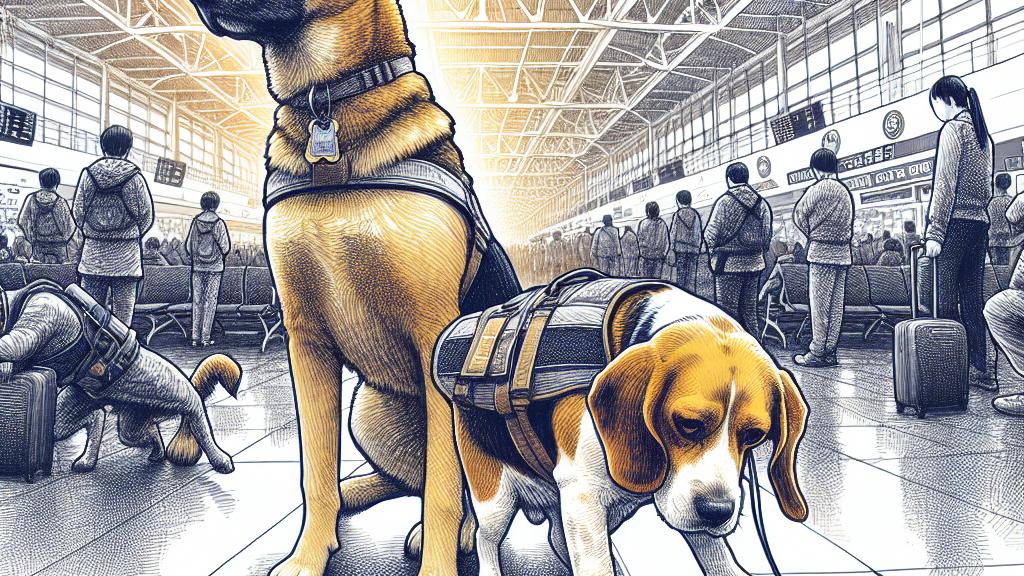K9s with a Nose for Trouble: South Korea's Bed Bug and Body Detecting Dogs Make Waves!
Overview
- South Korea develops trained sniffer dogs for identifying bed bugs and locating human remains.
- Ceco, a beagle, achieves a 95% accuracy rate in detecting bed bugs in under two minutes.
- The integration of cadaver dogs with drone technology transforms search and rescue operations.

Transforming Roles of Sniffer Dogs
In South Korea, sniffer dogs are undergoing a remarkable transformation in their roles, breaking the traditional boundaries of drug and explosive detection. The latest innovation features dogs that can now find notorious pests like bed bugs and even track human remains in water. This shift is exemplified by the debut of Ceco, a beagle specifically trained to detect bed bugs, and Alpha, a Belgian Malinois skilled in locating submerged bodies. At Incheon Airport, Ceco remarkably demonstrated its prowess, achieving a stunning accuracy rate exceeding 95% in identifying bed bugs within just two minutes. This new initiative not only elevates pest control methods but also reassures travelers of their safety.
The Mechanics of Bed Bug Detection
Ceco's specialized training enables it to detect bed bug pheromones at an astonishing rate—40 times more efficiently than humans can. Bed bugs are elusive creatures, often hiding in tight spots, especially within hotel settings where frequent visitors can inadvertently introduce them. Equipped with this understanding, pest control efforts are significantly enhanced through canines like Ceco. If travelers engage such services, they can avoid potential infestations, underscoring the proactive nature of this initiative in public health and hospitality.
Revolutionizing Search and Rescue Operations
The synergy of canine talent and cutting-edge technology is reshaping search and rescue operations in South Korea. Alpha, the cadaver dog, has showcased an impressive ability to detect decomposing remains from water surfaces in practice drills. By sniffing out the unique gases emitted during decomposition, Alpha provides crucial assistance in search scenarios. Additionally, combining its skills with underwater drones allows search teams to efficiently locate missing persons, significantly reducing response times and improving the accuracy of recovery missions, thus providing comfort to grieving families.
The Science Behind Canine Olfaction
Dogs are equipped with extraordinary olfactory systems that contain about 220 million scent receptors, in stark contrast to the mere 5 million in humans. This anatomical advantage gives them an unparalleled ability to detect scents, even in minuscule concentrations. They can identify chemical signals at parts per trillion, which encompasses smells undetectable to the human nose. This remarkable olfactory power extends far beyond pest detection; it has also been harnessed in medical fields, such as identifying diseases like cancer, which can change the future of diagnostics and early detection.
Future Directions for Canine-Assisted Solutions
The introduction of specialized sniffer dogs like Ceco and Alpha signifies a groundbreaking approach to combat modern challenges in pest control, public safety, and search and rescue missions. As society increasingly recognizes the capabilities of canines, their roles are likely to expand further—into areas like healthcare where they could assist in disease detection and monitoring conditions like diabetes. This broadened scope not only enhances the contributions of dogs in human safety and comfort but also fosters a deeper appreciation for our canine companions as indispensable allies in multiple facets of life.

Loading...